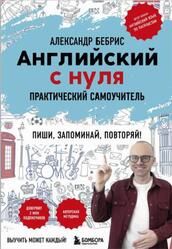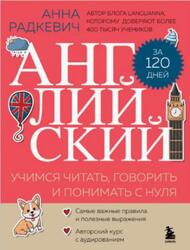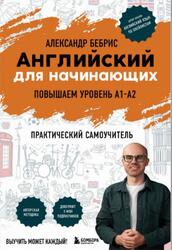The American Heritage Dictionary.
Как часто вы слышали такую фразу: «У меня такие гены, что я могу сделать?» Многие люди произносят ее, когда говорят о своих болезнях, лишнем весе, пагубных привычках… А что, если гены, данные от рождения, можно изменить? Что, если это не гены контролируют нашу жизнь, а мы контролируем наши гены? Именно к такому выводу пришли авторы уникальной книги, которую вы держите сейчас в руках – Дипак Чопра и Рудольф Танзи. Они уверены, что каждый может направить активность своих генов в позитивное русло и достичь состояния «радикального благополучия»: обрести гармонию тела и сознания, улучшить свое здоровье. Но как? Ответ на этот вопрос, а также революционные открытия, дельные советы и полезные практики вы найдете в этой книге.
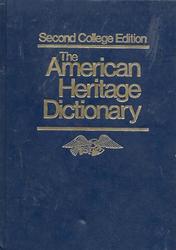
THE HISTORICAL BACKGROUND OF AMERICAN ENGLISH.
This natural history of the American people is the essential gift of the mother tongue. With all speakers of the English language Americans share the results of 1,500 years of linguistic development, and English had itself evolved for a full millennium before the first American words were spoken in Virginia. Furthermore, as a member of the Germanic language group of the Indo-European language family, English shares an ultimate heritage with most of the modern languages of Europe and Asia and with the official languages of ever)' government in North and South America.
The essential features of the Germanic languages are these: (1) a thoroughgoing modification of the consonant system, especially the so-called First Germanic Consonant Shift, which distinguishes the system from all other Indo-European consonant patterns. It is captured in Grimm’s Law and accounts for the differences between initial sounds in such cognate pairs as Latin/English pater/father, m/thou, and hortus/garden; (2) mutation of vowels by neighboring sounds (umlaut) and the adaptation of the vowel system to express grammatical functions; (3) regular word stress on the first syllable; (4) seven classes of strong (irregular) verbs, such as sing, sang, sung; (5) three classes of weak (regular) verbs, such as love, loved, loved; (6) strong and weak adjectives that disappeared in Medieval English but endure elsewhere, as in Modern German and Norwegian definite and indefinite articles; and (7) a core vocabulary of common words. These shared characteristics define the 13 modern Germanic languages: Danish, Faroese, Icelandic, Norwegian, Swedish, German, Yiddish, Low German, Dutch, Afrikaans, Flemish, Frisian, and English.
Бесплатно скачать электронную книгу в удобном формате, смотреть и читать:
Скачать книгу The American Heritage Dictionary - fileskachat.com, быстрое и бесплатное скачивание.
Скачать pdf
Ниже можно купить эту книгу, если она есть в продаже, и похожие книги по лучшей цене со скидкой с доставкой по всей России.Купить книги
Скачать - pdf - Яндекс.Диск.
Дата публикации:
Теги: учебник по английскому языку :: английский язык
Смотрите также учебники, книги и учебные материалы:
Следующие учебники и книги:
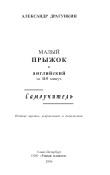 Малый прыжок в английский за 115 минут, самоучитель, Драгункин А.Н., 2006 — Абсолютно другая , истинная грамматика современного английского языка. Книга предназначена для всех изучающих и преподающих английский. Книги по английскому языку
Малый прыжок в английский за 115 минут, самоучитель, Драгункин А.Н., 2006 — Абсолютно другая , истинная грамматика современного английского языка. Книга предназначена для всех изучающих и преподающих английский. Книги по английскому языку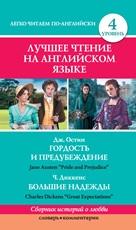 Гордость и предубеждение, Большие надежды, Диккенс Ч., Остен Д., 2015 — В данный сборник вошли два шедевра английской литературы: романы Гордость и предубеждение Джейн Остин и Большие надежды Чарльза Диккенса. Тексты … Книги по английскому языку
Гордость и предубеждение, Большие надежды, Диккенс Ч., Остен Д., 2015 — В данный сборник вошли два шедевра английской литературы: романы Гордость и предубеждение Джейн Остин и Большие надежды Чарльза Диккенса. Тексты … Книги по английскому языку Грозовой перевал, Бронте Э., 2014 — На вересковых пустошах Йоркшира, открытых всем ветрам, стоит старый фермерский дом, Грозовой Перевал, который скрывает мрачные тайны. Какие же страшные … Книги по английскому языку
Грозовой перевал, Бронте Э., 2014 — На вересковых пустошах Йоркшира, открытых всем ветрам, стоит старый фермерский дом, Грозовой Перевал, который скрывает мрачные тайны. Какие же страшные … Книги по английскому языку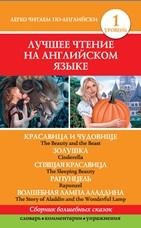 Красавица и чудовище, Золушка, Спящая красавица, Рапунцель, Лампа Аладдина, Абрагина Д.Л., Матвеева С.А., 2014 — В настоящий сборник вошли самые известные и любимые волшебные сказки: Красавица и чудовище , Золушка , Спящая красавица , Рапунцель … Книги по английскому языку
Красавица и чудовище, Золушка, Спящая красавица, Рапунцель, Лампа Аладдина, Абрагина Д.Л., Матвеева С.А., 2014 — В настоящий сборник вошли самые известные и любимые волшебные сказки: Красавица и чудовище , Золушка , Спящая красавица , Рапунцель … Книги по английскому языку
Предыдущие статьи:
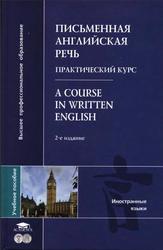 Письменная английская речь, практический курс, A Course in Written English, Салье В.М., Мячинская Э.И., Цурикова Л.П., 2005 — Пособие представляет собой полный систематизированный курс письменной практики по английскому языку. Цель пособия способствовать усвоению студентами орфографической, орфоэпической, лексической, грамматической … Книги по английскому языку
Письменная английская речь, практический курс, A Course in Written English, Салье В.М., Мячинская Э.И., Цурикова Л.П., 2005 — Пособие представляет собой полный систематизированный курс письменной практики по английскому языку. Цель пособия способствовать усвоению студентами орфографической, орфоэпической, лексической, грамматической … Книги по английскому языку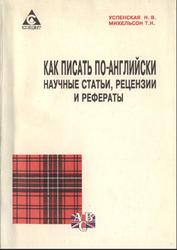 Как писать по-английски научные cтатьи, рецензии, рефераты, Михельсон Т.Н., Успенская Н.В., 1995 — Как писать по-английски научные статьи, рецензии, рефераты, Михельсон Т.Н., Успенская Н.В., 1995. Настоящее пособие предназначено для научных работников, аспирантов и … Книги по английскому языку
Как писать по-английски научные cтатьи, рецензии, рефераты, Михельсон Т.Н., Успенская Н.В., 1995 — Как писать по-английски научные статьи, рецензии, рефераты, Михельсон Т.Н., Успенская Н.В., 1995. Настоящее пособие предназначено для научных работников, аспирантов и … Книги по английскому языку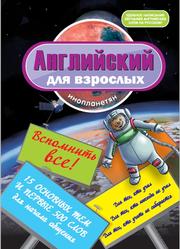 Английский для взрослых инопланетян, Беляева И.В., 2012 — Дорогие друзья! Меня зовут Баракуда. Я прилетел на Землю из далекого космоса, чтобы подружиться с людьми. Для того чтобы понимать … Книги по английскому языку
Английский для взрослых инопланетян, Беляева И.В., 2012 — Дорогие друзья! Меня зовут Баракуда. Я прилетел на Землю из далекого космоса, чтобы подружиться с людьми. Для того чтобы понимать … Книги по английскому языку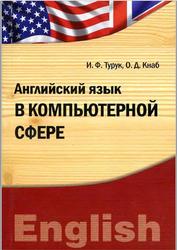 Английский язык в компьютерной сфере, Турук И.Ф., Кнаб О.Д., 2012 — Данное пособие предназначено для учащихся, специализирующихся в области компьютерных технологий. Целью данного пособия являются отработка навыков чтения и понимания специального … Книги по английскому языку
Английский язык в компьютерной сфере, Турук И.Ф., Кнаб О.Д., 2012 — Данное пособие предназначено для учащихся, специализирующихся в области компьютерных технологий. Целью данного пособия являются отработка навыков чтения и понимания специального … Книги по английскому языку


